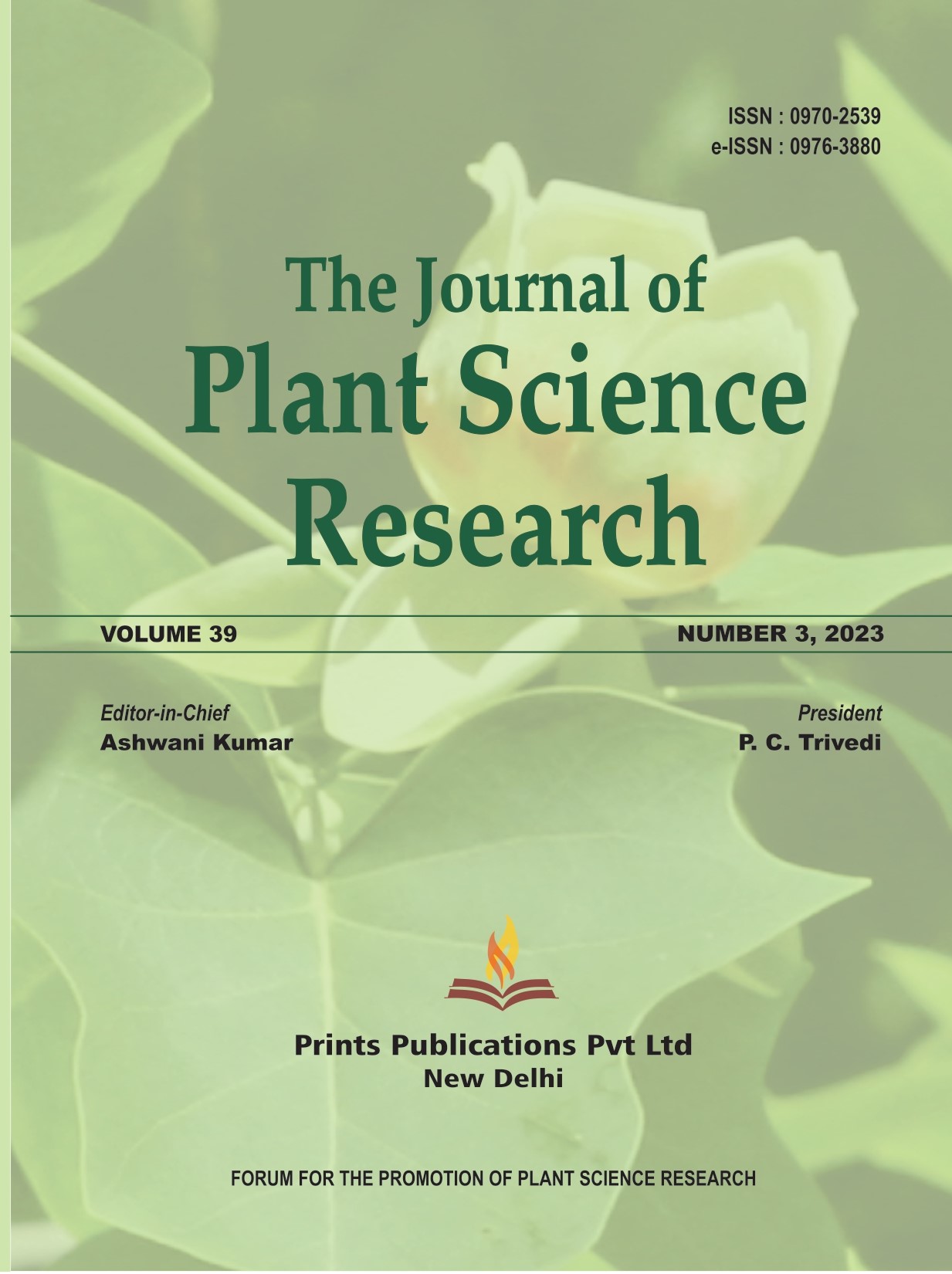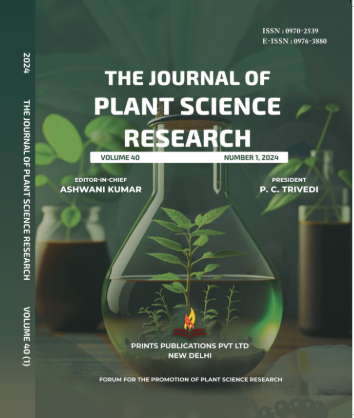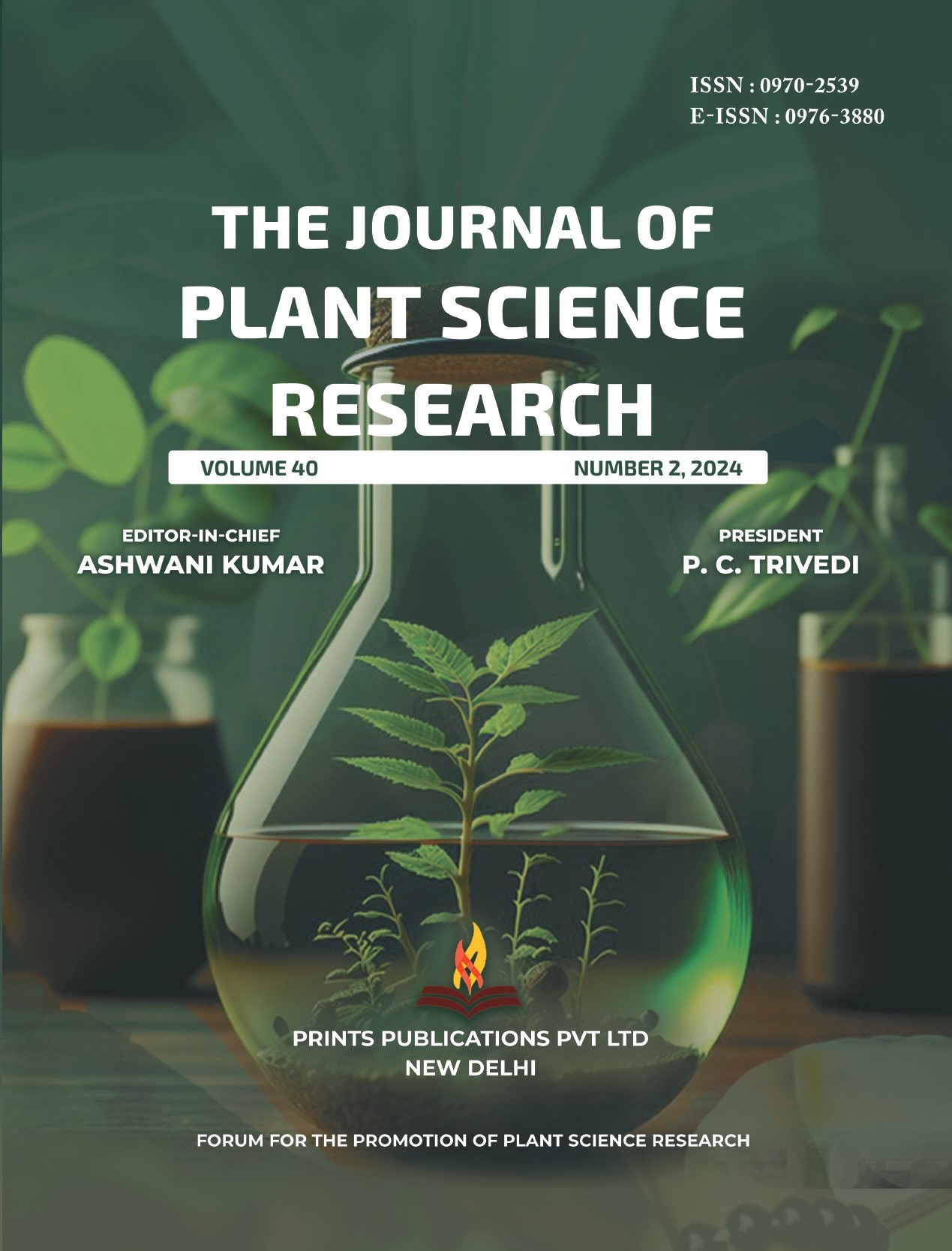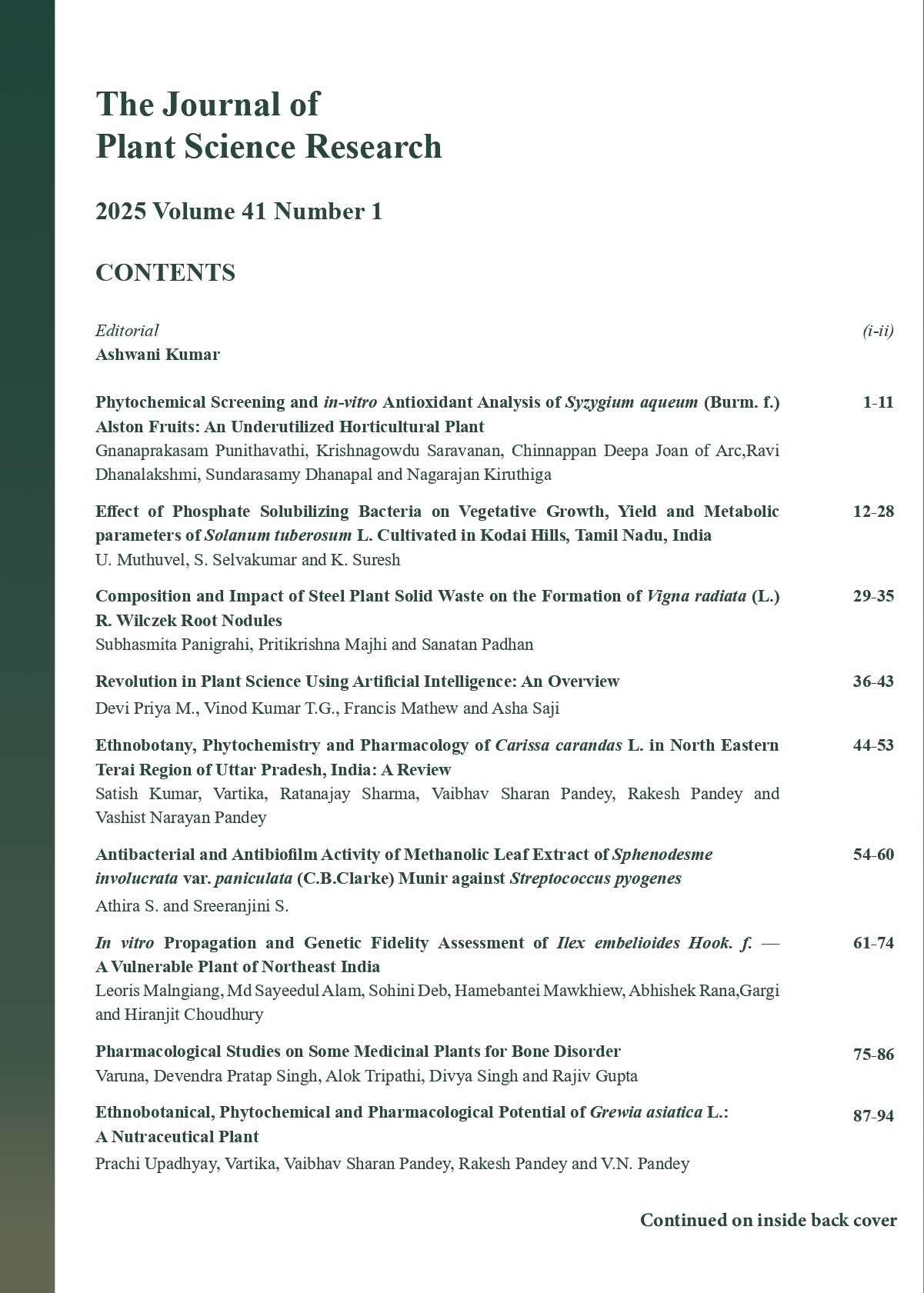The Journal of Plant Science Research - A UGC Care-Listed Journal
Published in Association with Forum For the Promotion of Plant Science Research
Current Volume: 41 (2025 )
ISSN: 0970-2539
e-ISSN: 0976-3880
Periodicity: Tri-annual
Month(s) of Publication: April, August & December
Subject: Botany
DOI: 10.32381/JPSR
Online Access is Free for Life Member
Comparative Study of Hypothetical Proteins from Various Avicennia Proteome by Relative Evaluation Designed for Development of New Structures by Homology Modelling
By : Arpita Banerjee, Renia Mullick, Suchita Sinha, Udisha Datta,
Page No: 279-287
Abstract:
Relative study of three different Avicennia species has been done here for the annotation of Hypothetical Proteins (HPs). Avicennia alba (2), A. marina (13) and A. officinalis (4) HPs were chosen from the database NCBI for this study. The annotation has been done using several servers to know their functions and structures along with their probable locations and closest orthologous organism. Homology modelling (SWISS MODEL) has also been studied for knowing the probable 3D Model. The cellular locations including their role is estimated from CELLO. Anticipation of SignalP predicting signal peptides is studied. Nearly all of the protein sequences of Avicennia marina have orthologs belonging to Oryza varieties-Oryza glaberrima, Oryza rufipogon and also with Populus trichocarpa; whereas, A. alba has closest orthologs of its protein sequence to the protein sequence of Linum usitatissimum. A. officinalis failed to show any closest orthologs. The protein structure has been assessed by PHYRE2 and probable 3D Model along with Ramachandran Plot predicted by SWISS MODEL. The results generated showed that the protein sequences of Oryza varieties, Populus trichocarpa and Linum usitatissimum has similar stress and defense response genes like that of Avicennia. Hypothetical proteins have the capability for understanding a number of anonymous functions and structures of the given proteins, aiding in further analysis. Relative Evaluation is done in every single step to cross verify and to obtain the results
Authors:
Arpita Banerjee: Research Scholar, PG Department of Botany, Lady Brabourne College, Beniapukur, Kolkata, West Bengal, India.
Renia Mullick: Research Scholar, PG Department of Botany, Lady Brabourne College, Beniapukur, Kolkata, West Bengal
Suchita Sinha: Associate Professor, PG Department of Botany, Lady Brabourne College, Beniapukur, Kolkata, West Bengal
Udisha Datta: Research Scholar, PG Department of Botany, Lady Brabourne College, Beniapukur, Kolkata, West Bengal
Debleena Roy: Associate Professor, PG Department of Botany, Lady Brabourne College, Beniapukur, Kolkata, West Bengal
DOI: https://doi.org/10.32381/JPSR.2025.41.02.8






